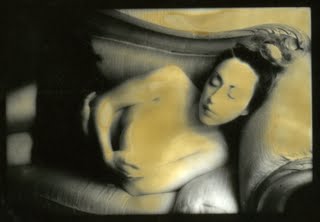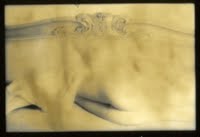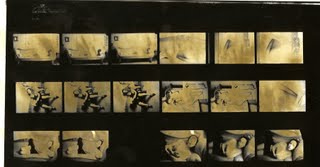Deterioration - The Bad & The Good
Thursday, January 07, 2010

Since I broke my Left elbow a couple of years ago I have not really been able to get the flexibility of the arm back. Putting on a shirt is not easy now as I have found. It is most difficult to hold on to the top button holes of my shirt so I can slip the buttons with the right hand. So this morning, as I was nursing lower back pain and two arthritic pinkies, I was confused when I could not lift my heavy tea mug to my lips with my right hand. I am a dyslexic so for a few seconds I was unsure which elbow I had broken. The confusion over, I found out that my right arm was stiff as my arthritis, or whatever else it is, is spreading.

For years we have had shoe horns that I ignored and threw away. Suddenly I cannot put on a pair of shoes without one.

My physical deterioration began early. By the time I was 7 I could barely bend to touch my toes and only got as far as a bit beyond the knee. The doctors in Argentina said I had short and stiff tendons. I would have massive pain at night behind my knees. Since I am determined to end my days in bed and not in jogging gear everybody tells me “I told you so!” and I avoid most exercise. At age 67 I truly believe that anything past half a century is a bonus.

That’s bad deterioration- now for the good one.
As I was putting away the negatives away from yesterday’s blog featuring Linda Lorenzo and the fan I noticed a contact sheet that had gone through a colour change. Unless you properly wash and remove all traces of fixer from photographic paper, the paper will fade, spot, stain or change colour. This is particularly the case with what we used to call multigrade paper.

Variable contrast photographic paper was not a new thing back in the 50s. What was new was something pioneered by Ilford that was called Ilfospeed. This was paper that was coated with plastic or resin. This meant that the paper dried quickly and did so very flat. Glossy Ilfospeed was really glossy and there was no need to dry it with complicated drying machines.
 Blacks were very black which meant that Ilfospeed photographs reproduced beautifully in magazine and nespapers before the advent of scanners and digital cameras made the 8x10 glossy obsolete. Both the normal Ilfospeed and the variable contrast version called Multgrade were papers that were not really archival. This meant that unlike the good paper only (no plastic) photographic paper) these plastic or resin coated papers unless they were washed thoroughly they would stain and change colour with time even if kept in the dark.
Blacks were very black which meant that Ilfospeed photographs reproduced beautifully in magazine and nespapers before the advent of scanners and digital cameras made the 8x10 glossy obsolete. Both the normal Ilfospeed and the variable contrast version called Multgrade were papers that were not really archival. This meant that unlike the good paper only (no plastic) photographic paper) these plastic or resin coated papers unless they were washed thoroughly they would stain and change colour with time even if kept in the dark.
That was the case of the contact sheet you see here. The negatives themselves, which I washed for archival permanence, are pristine. These are Kodak b+w Infrared film negatives. Kodak stopped making this beautiful film some years ago and I have a few rolls in my freezer. But I must use them soon as Kodak b+w Infrared film is one of the few things that we know of that deteriorate as those illusive neutrinos pierce our globe unempeded by anything in their path.
I looked at the contact sheet and had an idea. I scanned each individual frame, of the contact sheet, with my Epson scanner. What you see here are some of the better ones which I think are really beautiful. I really did not do much to the scan except take out some of the dust that had attached itself to the contact sheet. One of the pictures is of the negative so that those of you who may be viewing this can see what happened. For me it shows that not all deterioration is of the bad type. Before the advent of my scanner I could have never been able to do this. I could even re-scan this contact sheet at a much larger resolution and have Grant Simmons at DISC produce some of his beautiful giclées. This is something that would be impossible in the normal darkroom. The only way would be for me to copy the contact’s frames with a very good larger format camera and get the best possible sharp colour transparency. And then I would still go to DISC for a colour giclée.
What is amazing as my body deteriorates is to find out that negatives that I would have never printed, since I never had the time to get to the darkroom or they simply did not look good enough somehow now have second life in my hybrid film/digital system.
I guess I can only taunt with glee my colleagues who shoot digital and tell them that their digital deterioration will be much more final and thus more painful. Those images will be, or they will not. In computers there are only zeros and ones. There are no 0.5s. There will not be any wonderful in-betweens.






